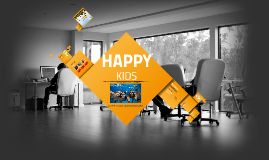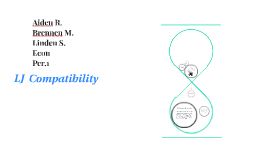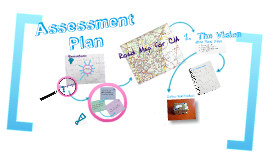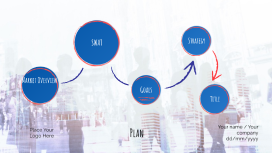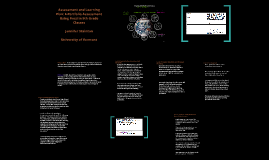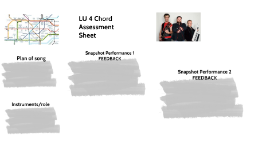Assessment Plan
Transcript: Assessment Plan Brainstorm Principles of Assessment Groupings Our assessment philosophy believes assessments should... Allow students to show what they know through their interests and strengths. Therefore, the assessment plan will allow for multiple ways for presenting information. Require creative and innovative thinking. Therefore, the assessment plan will allow for multiple answers and outcomes. Provide student's opportunities to self-assess. Therefore, the assessment plan will include feedback which shows student's strengths and areas of growth Be fair and equitable by being consistent and communicating clear and transparent expectations Therefore, consistent rubrics should be used with examples and models of proficiency. When developing assessments, they should... Demonstrate high levels of understanding and critical thinking (ESLRs) as well as basic knowledge and content. Therefore, the assessment plan will include short answer and/or discussion questions either written or verbal that require both inductive and deductive reasoning. Show student understanding of essential learnings. Therefore, the assessment plan would focus on a limited number of essential concepts to demonstrate depth of knowledge. Increase in complexity by level. Therefore, the assessment plan will reflect the vertical alignment of curriculum. Require demonstration of transfer of learning to new situations Therefore, the assessment plan will require students to apply their skills to new situations that have not been seen before. As an end result, assessments should Show a continuum of students' learning over time that increases in complexity by course level Therefore, the assesessment plan should not be based on one summative test. Include formative and summative assessments that lead to understanding of material and encourage risk-taking. Therefore, formative assessments do not have to be graded. Make multifaceted connections-to self, to curriculum, to the world by preparing students for a changing, complex future. Therefore, the assessment plan should include multiple sources beyond the immediate curriculum and assessments should involve research, analysis and open-ended questions about real life experiences. Road Map for CIA 1. The Vision A) In your own class B) Between like courses C) Within curriculum teams D) Schoolwide Year 1 Work to implement within your classes - which ones can be worked on individually? Years 1 and 2 Curriculum teams/small groups that lead into whole groups Discuss what we want to assess and vertically articulate Curriculum team time focused on this Years 2, 3, 4 Discussion time across curriculum teams Years 4 and 5 Begin to transition to whole school (doesn't discount or take away other steps, just another aspect to look at) Allow time for different curriculum teams to meet together Allow more time for class levels to meet. Define End Product Will teachers have to produce different products depending on which year of the plan we're in? Will teachers be responsible for submitting something or a series of things to demonstrate their utilization of the Assessment Plan each year? When do we want to tackle fitting Aeries into this equation? What will happen if the Common Core Assessment is meritable as our new system of measurement? How will that change what teachers do in the classroom? How will we scaffold to help teachers in their efforts to apply our assessment principles to their classrooms? What kinds of professionsal development are needed? We know that the utilization of the Assessment Plan will replace benchmarks (as a finished, turned in product to administration). In these early years, should they also replace individual and group goals so that more time can be invested in the utilization of the Assessment Plan? How do we transition to the common core standards at the same time Should there be a number and time frame affixed to the assessments? a guideline to be decided upon in curriculum teams or course levels? When and What input do we want from the whole staff? How many of these questions does the CIA committee answer, how many are discussed in curriculum teams? (cc) photo by Metro Centric on Flickr Budapest Five Year Plan San Francisco 1. Demonstrate high levels of understanding and critical thinking (ESLRs) as well as basic knowledge and content. 2. Show student understanding of essential learnings. 3. Increase in complexity by level. 4. Require demonstration of transfer of learning to new situations. Stockholm (cc) photo by jimmyharris on Flickr (cc) photo by Franco Folini on Flickr 2. Define Steps 1. Show a continuum of students' learning over time that increases in complexity by course level. 2. Include formative and summative assessments that lead to understanding of material and encourage risk-taking. 3. Make multifaceted connections - to self, to curriculum, to the world by preparing students for a changing, complex future. (cc) photo by Metro Centric on Flickr Professional Development







